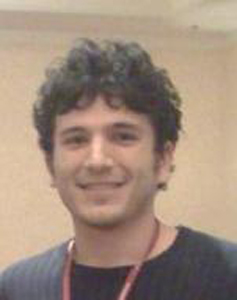Program Information
Tumor Shrinkage Prediction Using CT Image Features
L Hunter*, Y Chen, L Zhang, J Matney, F Stingo, S Kry, M Martel, H Choi, Z Liao, D Gomez, L Court, MD Anderson Cancer Ctr., Houston, TX
TU-A-WAB-11 Tuesday 8:00AM - 9:55AM Room: Wabash BallroomPurpose: To develop a quantitative image feature model to predict non-small cell lung cancer (NSCLC) volume shrinkage from standard of care pre-treatment CT images.
Methods: 64 stage II-IIIB NSCLC patients with similar treatments were all imaged using the same CT scanner and protocol. For each patient, the planning gross tumour volume (GTV) was deformed onto the week six treatment image, and tumour shrinkage was quantified as the deformed GTV volume divided by the planning GTV volume. Geometric, intensity histogram, absolute gradient image, co-occurrence matrix, and run-length matrix 3D quantitative image features were extracted multiple times from each planning GTV using a variety of feature extraction parameters. Prediction models were generated using principal component regression with simulated annealing subset selection; performance was quantified using the mean squared error (MSE) between the predicted and observed tumour shrinkages. Cross validation and permutation tests were used to validate the results.
Results: The optimal model gave a strong correlation between the observed and predicted shrinkages with r=0.81 and MSE =0.0086. Compared to predictions based on the mean population shrinkage (i.e. predicted shrinkage = mean shrinkage; MSE =0.0251) this resulted a 2.92 fold reduction in MSE. That is, the tumor shrinkage uncertainty was reduced by a factor of approximately three.
Conclusion: A quantitative image feature model can use existing CT images to successfully predict tumour shrinkage and provide additional information for clinical decisions regarding patient risk stratification, treatment, and prognosis.
Contact Email:


